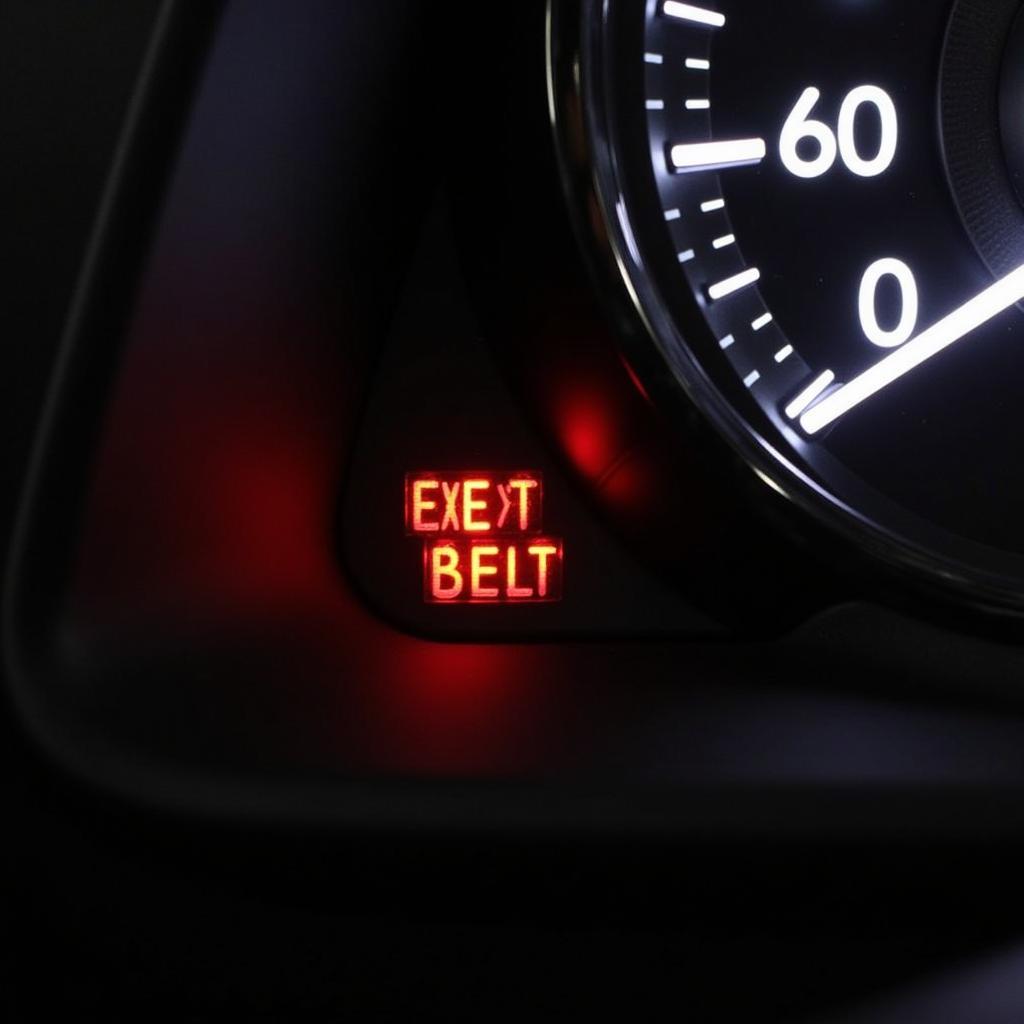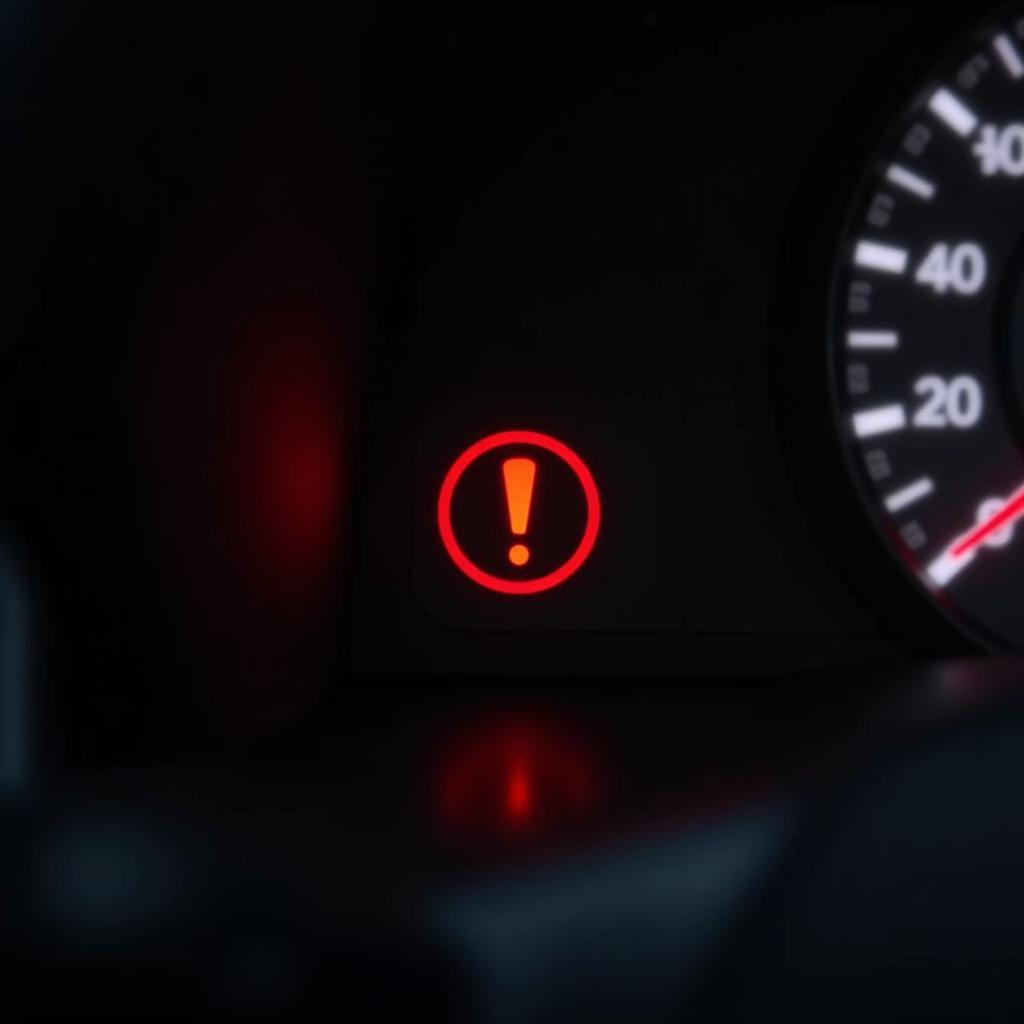The dreaded brake warning light on your Mercedes Sprinter can be a source of anxiety. This guide will delve into the common causes, diagnostic techniques, and solutions for a brake warning light on a Mercedes Sprinter van, empowering you to address this issue effectively, whether through DIY fixes or professional assistance.
Understanding Your Sprinter’s Brake System
The brake system in your Mercedes Sprinter is a complex network of components working together to ensure safe and efficient stopping power. Understanding the basics of this system is crucial to diagnosing the cause of a brake warning light. The main components include the brake pedal, master cylinder, brake lines, brake calipers, brake pads or shoes, and the brake fluid reservoir. Any fault within this intricate system can trigger the warning light.
Common Causes of a Brake Warning Light
A brake warning light on your Mercedes Sprinter can illuminate for several reasons, ranging from simple issues to more complex problems. Low brake fluid is the most frequent culprit. Other causes include worn brake pads or shoes, a malfunctioning brake sensor, issues with the ABS (Anti-lock Braking System), or problems with the parking brake.
Low Brake Fluid
Low brake fluid levels can significantly compromise your braking ability. This often indicates a leak somewhere in the brake system, requiring immediate attention.
Worn Brake Pads or Shoes
Brake pads and shoes wear down over time with regular use. When they reach a critical wear level, a sensor triggers the warning light, signaling the need for replacement.
ABS Issues
Problems with the ABS, such as a faulty sensor or control module, can also activate the brake warning light. This can affect the vehicle’s stability and braking performance, particularly in slippery conditions.
Parking Brake Problems
If the parking brake is not fully released or there’s a fault in the parking brake system, the warning light may illuminate.
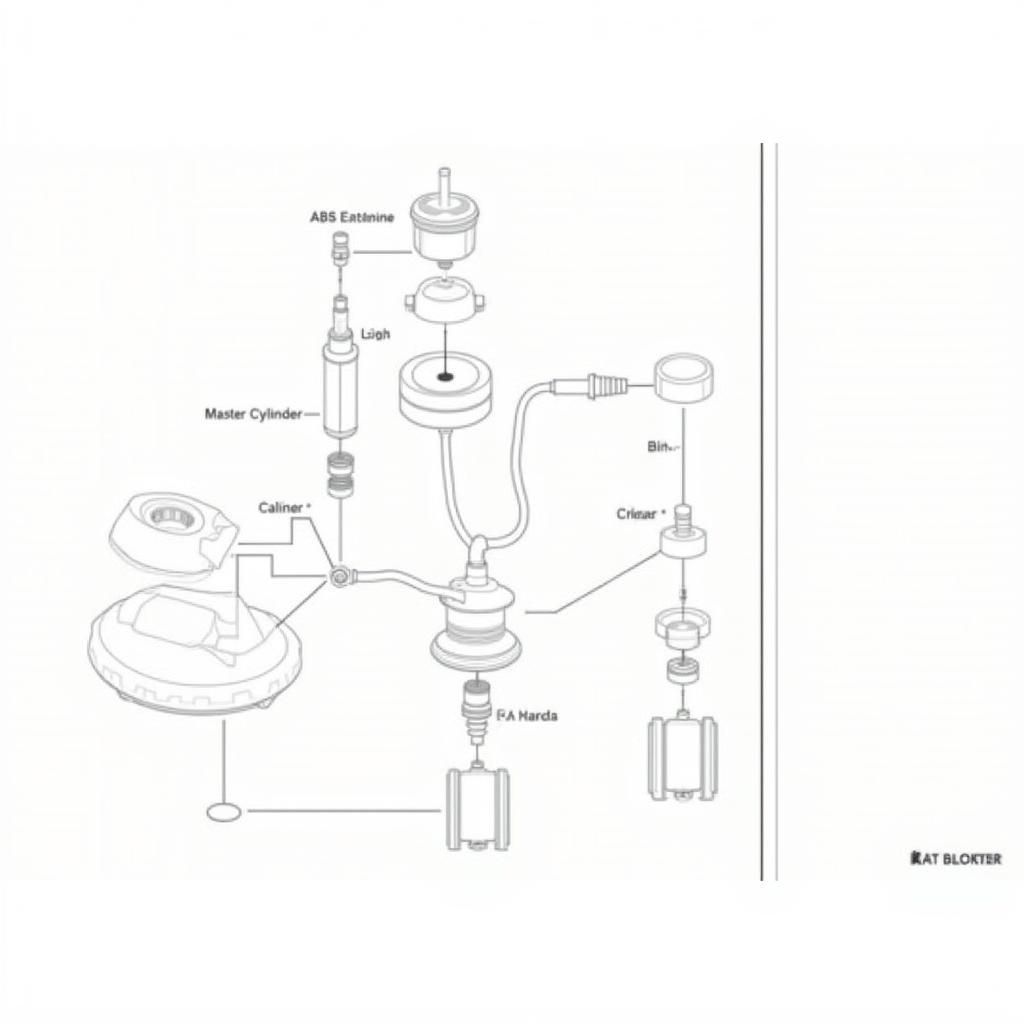 Mercedes Sprinter Brake System Components Diagram
Mercedes Sprinter Brake System Components Diagram
Diagnosing the Problem
Diagnosing the cause of a brake warning light often requires a systematic approach. Start by checking the brake fluid level in the reservoir. If it’s low, look for signs of leaks around the brake lines, calipers, and master cylinder. Inspect the brake pads and shoes for wear. If they appear thin or worn, they likely need replacing. For more complex issues like ABS faults, using a diagnostic scanner can pinpoint the specific problem area.
Using a Diagnostic Scanner
A diagnostic scanner can retrieve fault codes from the vehicle’s computer, providing valuable insights into the cause of the brake warning light. These codes can identify specific sensors, modules, or components that are malfunctioning.
DIY Fixes vs. Professional Assistance
Some brake warning light issues, like topping off brake fluid or replacing brake pads, can be handled by DIY enthusiasts with the right tools and knowledge. However, more complex problems, such as ABS faults or brake line leaks, require the expertise of a qualified mechanic.
When to Seek Professional Help
If you’re unsure about the cause of the brake warning light or if the problem involves complex components like the ABS, it’s best to seek professional assistance. Attempting to repair these systems without proper training and equipment can lead to further damage or safety risks.
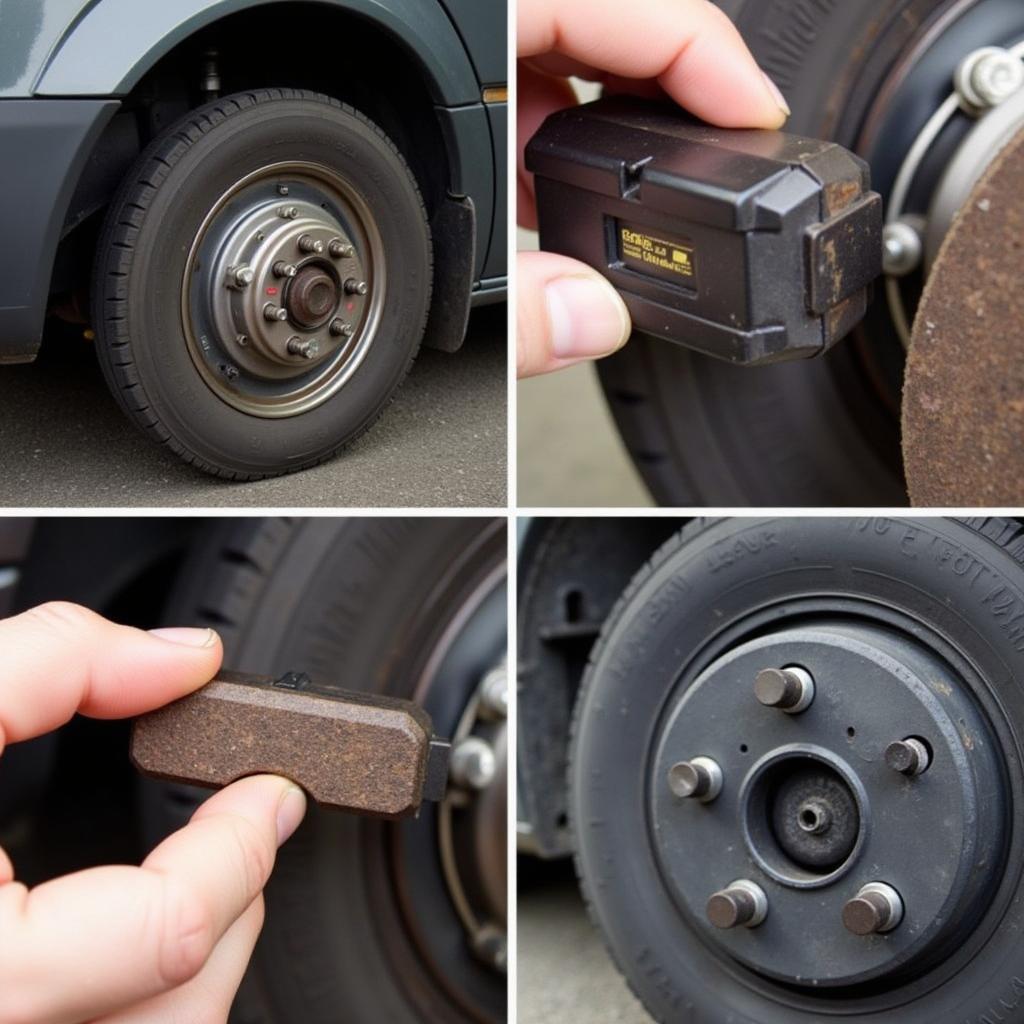 Inspecting Brake Pads on a Mercedes Sprinter
Inspecting Brake Pads on a Mercedes Sprinter
Remote Diagnostics and Programming
In some cases, remote diagnostics and programming can be used to address certain brake system issues. This involves connecting the vehicle to specialized software that can identify and fix software-related problems, often without requiring physical access to the vehicle.
“Remote diagnostics is a game-changer for fleet management,” says John Davis, a seasoned automotive technician specializing in Mercedes Sprinter vans. “It allows us to quickly diagnose and often fix software glitches, minimizing downtime and saving valuable time and resources.”
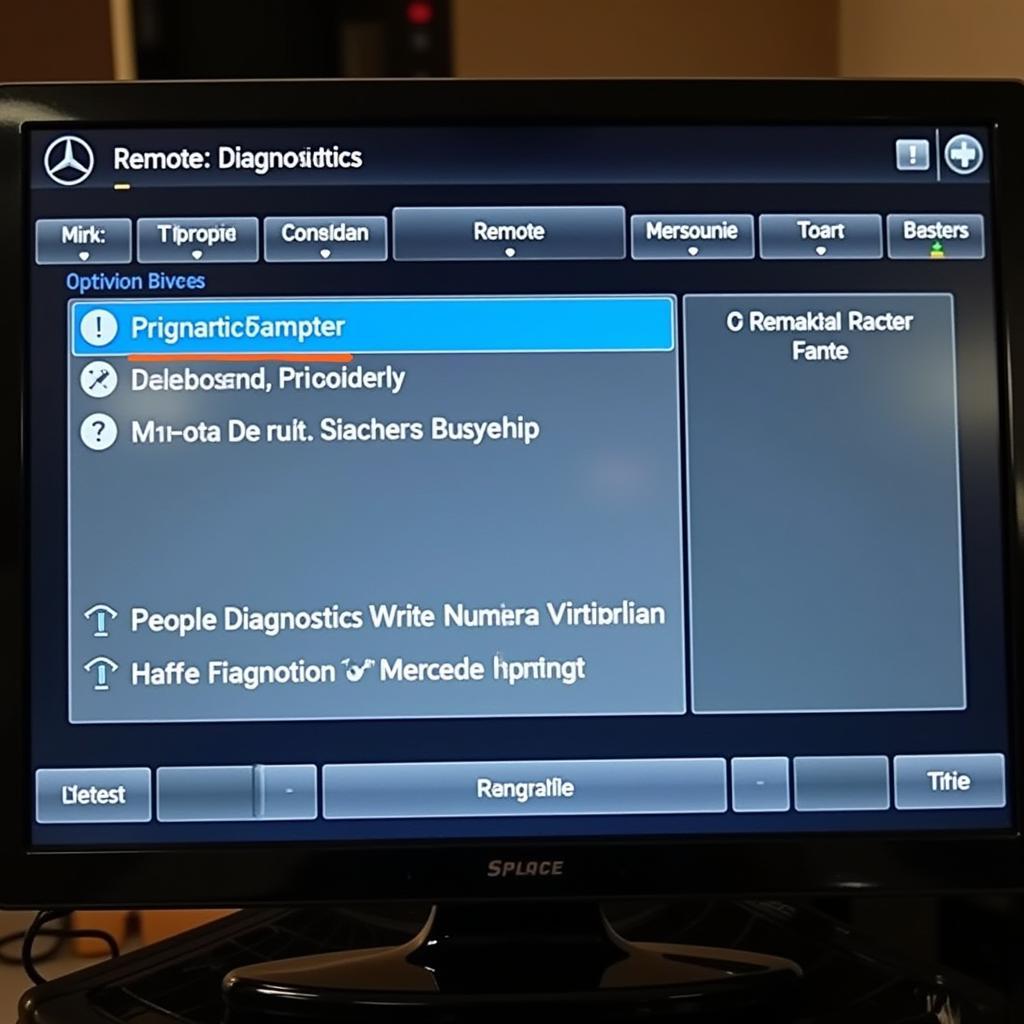 Remote Diagnostics Software Interface for Mercedes Sprinter
Remote Diagnostics Software Interface for Mercedes Sprinter
Preventing Future Brake Issues
Regular maintenance is key to preventing future brake problems. This includes routine brake inspections, timely brake pad and shoe replacements, and regular brake fluid flushes. Addressing minor issues promptly can prevent them from escalating into more significant and costly repairs.
“Preventive maintenance is always the best approach,” advises Maria Sanchez, a leading expert in automotive diagnostics. “Regular checks and timely replacements can significantly extend the life of your brake system and ensure optimal safety.”
Conclusion
A brake warning light on your Mercedes Sprinter should never be ignored. This guide provides a comprehensive understanding of the common causes, diagnostic techniques, and solutions for this issue. Whether you choose a DIY approach or seek professional assistance, addressing the problem promptly is crucial for your safety and the longevity of your vehicle. Remember, regular maintenance is the key to preventing future brake problems and keeping your Mercedes Sprinter running smoothly.
FAQ
- What should I do if my brake warning light comes on while driving? Safely pull over to the side of the road and assess the situation. Check your brake fluid level and look for any visible leaks. If you’re unsure about the cause, contact a qualified mechanic.
- How often should I check my brake fluid? It’s recommended to check your brake fluid level at least once a month.
- Can I drive with the brake warning light on? It’s not advisable to drive with the brake warning light on. It indicates a potential problem with your brake system that could compromise your safety.
- How much does it cost to replace brake pads on a Mercedes Sprinter? The cost of brake pad replacement varies depending on the specific model and labor rates. Contact a local mechanic for a quote.
- How can I prevent my brake warning light from coming on? Regular maintenance, including brake inspections, timely pad replacements, and fluid flushes, can help prevent brake warning light issues.
- What is the difference between a brake warning light and an ABS warning light? The brake warning light indicates a general problem with the braking system, while the ABS warning light specifically signals an issue with the Anti-lock Braking System.
- Can remote diagnostics fix all brake problems? No, remote diagnostics is primarily useful for software-related issues. Mechanical problems often require physical inspection and repair.


